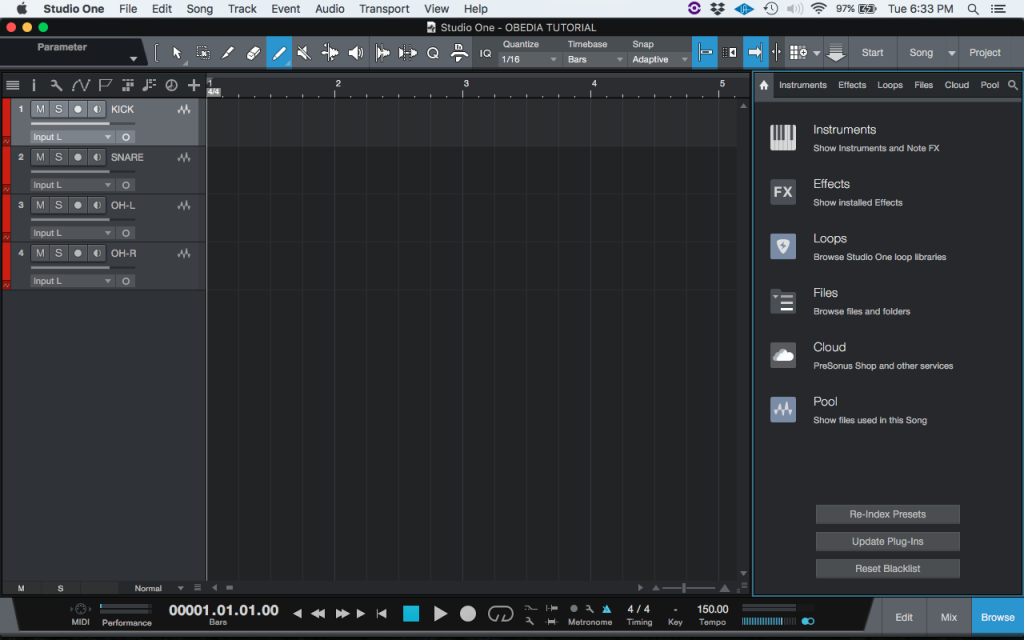

Where version 3 was perhaps all about mixing, production, arranging and audio processing, version 4 is about giving producers, songwriters and music makers more compositional tools for the writing of music. So, when you’ve already caught up with the rest of the market, what do you do with the next update? PreSonus decided to get creative. It was no longer the underdog, and no second fiddles needed playing: Studio One had pulled in the high production values and become a decent DAW that deserved your attention. PreSonus had ticked all the boxes, appropriated all the features, and designed an interface that was familiar enough to attract casual Cubase users while being serious enough to pull in seasoned Pro Tools professionals, and vice versa.

Under the "Locations" tab click "Reset Blacklist".With the fundamentals covered in previous versions, Studio One 4 branches out to explore new creative possibilities.įor me, version 3 marked the moment when Studio One caught up with the competition. Go to the "Studio One" drop down menu and select "Options". The location of plug-in files are depend your setting during installation.ģ2bits - C:\Program Files (x86)\VstPlugins Just replace it with BIAS FX and you're good to go)ġ) Launch Studio One, go to ‘Studio One -> Options -> Locations -> VST Plug-ins’Ģ) Make sure the correct location is added. (In this video, Studio One's built-in amp simulator is used. If your version is correct, please follow the steps below:ġ) Launch Studio One, go to ‘Studio One -> Preferences -> Locations -> VST Plug-ins’Ģ) Make sure the correct location is added:Īudio Unites : ' /Library/Audio/Plug-ins/Components/ ‘ģ) Please tick the 'Scan at startup' option, make sure Studio One scans your plug-ins at the program startup.Ĥ) Now refer to this video here to record your guitar track with input monitoring.
-3_big.jpg)
You can check the link below foe Studio One version comparison: Only Studio One Producer and Studio One Professional support 3rd party plug-in, please make sure your version is correct.


 0 kommentar(er)
0 kommentar(er)
